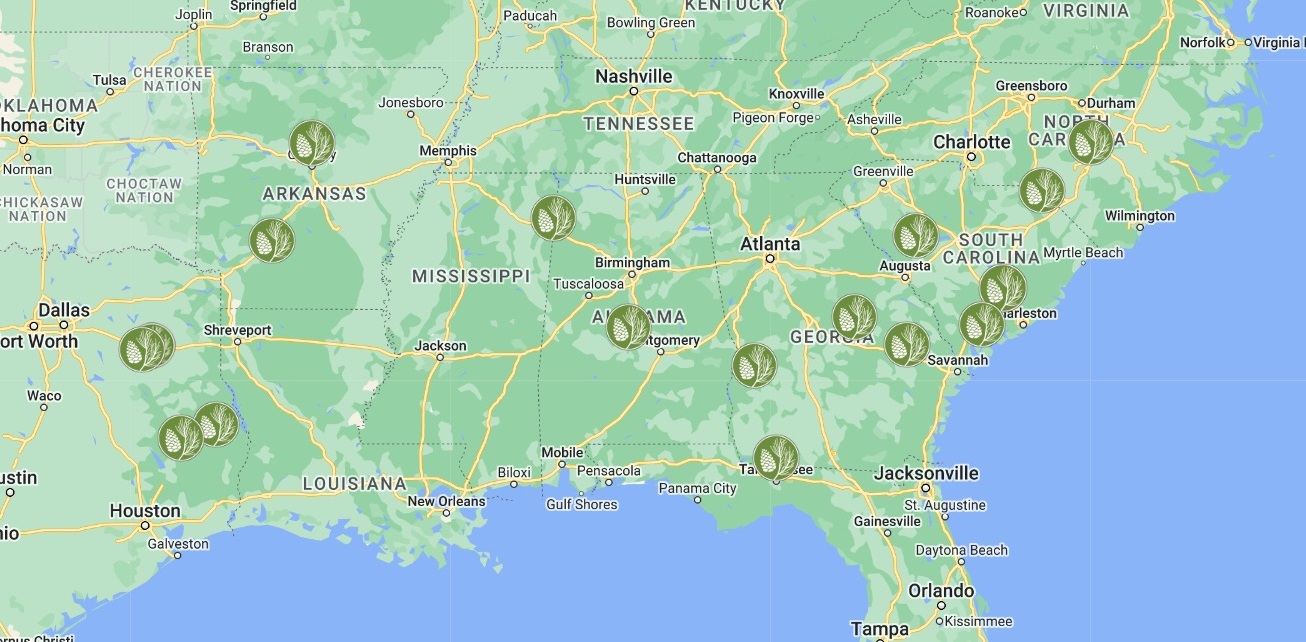
Authored by Paul Jeffreys Ph.D.
Paul Jeffreys is the Reforestation Advisor for Alabama and Northern Mississippi. He is also the manager of Special Projects and Sustainability.
Paul has been a valuable member of the ArborGen Reforestation Team for over ten years. Paul’s career path was straightforward, with a PhD in forestry and being a timberland owner in Alabama.
If you’ve ever walked through a Loblolly (Pinus taeda) or Slash (Pinus elliottii) pine stand during the spring, you’ve probably noticed something that looks like bright orange snack dust on the stem or limbs. Well, while it may look similar, that is definitely not cheese—and please don’t try to lick it off your fingers like my kids do when they’re snacking. What you’re seeing are the spores of Fusiform Rust, one of the most destructive diseases that can infect a Loblolly and/or Slash pine stand in the Southeast.
Fusiform rust can infect both the stems and limbs of trees, causing lesions that lead to malformed growth and even mortality in the stand. These lesions often appear as swollen cankers, which create weak points in the stem that are more susceptible to wind breakage, ultimately reducing the tree’s sawtimber potential.
There are certain areas—called “Hot” or “High Hazard Zones”—that have a higher occurrence of Fusiform Rust. These hot zones are typically characterized by high humidity and proximity to Red Oak bottomland stands, which often include Water, Willow, and Laurel Oaks. Spores from infected pine trees are dispersed by wind and infect young oak leaves. The spores produced on those oak leaves then go on to infect susceptible pine trees, completing a vicious cycle.
However, not all is lost if your land falls within one of these hot zones. There are proactive steps you can take to reduce the occurrence of rust. At ArborGen, we produce pine families that show a high degree of resistance to Fusiform Rust. If you’re planning to reforest in an area known to be a high hazard or hot zone, do yourself a favor: contact your ArborGen Reforestation Advisor for help selecting one of these resistant families.
While there isn’t a Loblolly or Slash pine family that is completely immune to Fusiform Rust, some families are significantly more resistant than others. And remember—leave the orange dust on your snacks, not your trees.



















